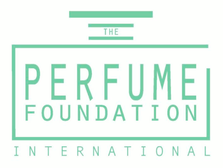|
By Creezy Courtoy, Olfaction Training Expert The olfactory sense is the first sense to be developed in the foetus.
It starts during week 7. It is also the sense that arrives at maturity before the others during week 25. Immersed in amniotic liquid, the foetus swims in a bath of emanations and swallows four to five quarts of flavoured water per day. Before their first feeding, newborns show attraction for their own amniotic liquid and keeps this preference for the one or two days required to adapt to the new food source.. Strongly flavoured foods, such as cumin, ginger, anise, when consumed by pregnant women can contribute to an interesting prenatal olfactory experience for the child. The olfactory sense presents an important development in infant behaviour. The first odour discerned by newborns is the smell of their mother, and it is that smell which will determine their behaviour towards others. The mother not only shares genes with her child, but also shares phenotypic features that are smells. The olfactory sense of newborns is certainly their most developed sense. It guides the child, and the messages they receive make them feel secure. Only a few days after their birth, babies begin using their noses to receive all emanations passing around them. Their smell is so sharp that they encounter all odours, smells that we are not able to smell anymore. Their olfactory sense is so much more sensitive than that of an adult. Even though they do not yet know how to express themselves verbally to communicate their senses, newborns react to odours through motor reactions of the respiratory or cardiac rhythm changes. Babies less than two weeks old orient themselves automatically towards maternal odours. They will learn to recognize their mother by her smell, which they will prefer to any other smell and will bond with it; this process gives them the security they need to live. It could be said that newborns “see” with their noses. When they grow older, children will use their sight as their primary sense and the olfactory sense appears last. This is why it is important to preserve their olfactory sense, encouraging them to smell as often possible. This will prevent them to lose this important sense and feel insecure in the future. “Les Ateliers des Petits Nez” (Workshops for Little Noses) pilot project proposes olfactory menus to nurseries and kindergartens. With the support and the involvement of master chefs, IPF proposed the food needs of the child and to the development of their olfactory perceptions. Menus should comply with local dietary directives and also budgetary and organisational instructions. Menus are composed such in a way, not to mix ingredients. They can be ground, but only ground separately to not mingle fragrances, allowing children to discover them one by one. Chefs are different for each country, so in order to respect the children’s food culture, in our course we don't give you recipes but we will list the ailments adapted to baby and child development. It has been proven scientifically that the sense of taste is 85% olfactory. This training will not only preserve and awaken children’s olfactory sense, but also their tasting curiosity and a good food habit. Children will then learn from the youngest age to associate all of their senses together starting from the olfactory sense. More info about the course
0 Comments
A Journey into Natural Perfumery and Extraction Methods By Andrej Babicky, Certified Natural Perfumer In May, I embarked on an enchanting journey to Grenada, the renowned "Island of Spices," to participate in the Scents of Grenada festival. This event, organized by perfumer Stephen Dirk and Tower Estate owner Isabelle Slinger, provided a unique opportunity to immerse myself in the world of natural perfumery and share my knowledge on enfleurage techniques and botanical tinctures. Supported by the Ministry of Tourism, this event aimed to highlight the island’s rich aromatic heritage and its potential in the field of natural perfumery. Grenada's tropical climate plays a significant role in its rich biodiversity. The island enjoys a wet season from June to December and a dry season from January to May. This climate fosters a wide variety of plant species, including numerous aromatic and medicinal plants. The concept of terroir, often used in the context of wine, is equally relevant to perfumery. Terroir refers to the unique combination of soil, climate, and topography that imparts distinct characteristics to the plants grown in a particular region. Grenada's terroir is uniquely suited to producing aromatic plants with rich and complex scent profiles. The Tower Estate, where the festival was held, is a testament to this rich terroir. The estate's garden is a meticulously curated collection of aromatic and perfumed tropical plants, designed to be a sanctuary for perfumers and enthusiasts. This living laboratory will offers an inspiring environment where visitors can experiment with different extraction methods, touch and smell the plants and flowers, and draw inspiration from nature's bounty. Despite Grenada experiencing a dry period during my visit, the garden was a testament to resilience and beauty, boasting stunning blooms of mango blossom, gardenias, Rangoon creeper, plumeria, various jasmine species, and the intoxicating ylang ylang. Ylang ylang (Cananga odorata) is a tropical tree native to Southeast Asia but has found a welcoming home in Grenada's climate. The tree's flowers are highly prized in perfumery for their sweet, floral, and slightly spicy scent. During our workshop, we delved into the art of enfleurage, a traditional method of capturing the ephemeral essence of flowers. Every morning, we handpicked ylang ylang flowers at dawn, preserving their delicate fragrance for our enfleurage experiments. This process, though labor-intensive, yields an exquisite and true-to-life fragrance that captures the living essence of the flower.  Our exploration did not stop at ylang ylang. We also worked with plumeria and mango flowers, each offering its unique aromatic profile. Additionally, we experimented with distillation using bay rum (Pimenta racemosa), a quintessential Caribbean plant with leaves that exude an unmistakable aroma. This hands-on experience provided invaluable insights into the diverse methods of extracting essential oils and the distinct characteristics of each plant. One of the highlights of my trip was encountering nutmeg in its natural habitat for the first time. Grenada is one of the world's largest producers of nutmeg, and this spice is integral to the island's identity. Both the nut and the mace, the lacy covering of the nutmeg seed, are used in perfumery, while the outer pulp is transformed into jams and drinks. Nutmeg's rich, warm aroma and versatile flavor have made it a prized ingredient in culinary delights and fragrant concoctions alike. This multifaceted use of nutmeg underscores the island's rich botanical heritage and its potential in natural perfumery. Grenada's unique climate and terroir are not only ideal for growing traditional aromatic plants but also support a range of endemic species. The island is home to several plants that are not found anywhere else in the world, offering a treasure trove of potential raw materials for perfumery. These endemic plants, combined with the island's rich spice heritage, create a diverse and vibrant aromatic landscape. The concept of the perfumer's garden at Tower Estate is particularly fascinating. It is a living, breathing repository of scents, offering a place for perfumers to connect with raw materials in their natural state. This garden not only serves as a source of inspiration but also as an educational platform where visitors can learn about the cultivation and extraction of aromatic plants. The idea of a perfumer's garden aligns perfectly with the principles of natural perfumery, which emphasize sustainability, ethical sourcing, and a deep connection to nature. The event itself is a dynamic meeting point for perfumers, enthusiasts, and local growers. It highlights the island's wealth of botanical resources and encourages the local community to explore the potential of these resources. Grenada's nickname, the "Spice Island," is well-earned, with abundant nutmeg, ginger, cinnamon, and other spices that are ideal for essential oil production. The festival also serves to awaken the interest of the locals to exploit the resources at their disposal and produce some essential oils from the plants that are widespread on the island. One of the promising aspects is its potential to create new business opportunities for local farmers and producers. By educating locals about the potential of Grenada's botanical resources, the event promotes the idea of creating a sustainable economy centered around natural perfumery. This not only preserves the island's heritage but also offers economic opportunities for local farmers and producers. Cultivating aromatic plants and producing essential oils can provide a new source of income for the local community, fostering economic growth while preserving the island's natural beauty. Moreover, events like this encourage experimentation with new materials and extraction methods. Grenada's unique climate and diverse plant species offer endless possibilities for innovation in natural perfumery. By exploring new combinations of raw materials and rediscovering traditional extraction methods, perfumers can create unique and captivating fragrances that reflect the island's rich aromatic heritage. During my stay, I also had the privilege of seeing the process of crafting enfleurage chassis from locally harvested mahogany wood. This beautiful and durable wood is used to create the frames that hold the fat used in enfleurage, adding a touch of local craftsmanship to the extraction process. The use of locally sourced materials not only supports the local economy but also ensures that the extraction methods are sustainable and environmentally friendly. The visit in Grenada provided an opportunity to discuss the potential of using endemic plants in perfumery. These unique species, found only in Grenada, offer a wealth of untapped potential for creating distinctive and exclusive fragrances. By cultivating these plants and developing new extraction methods, Grenada may become an important player in the field of natural perfumery, attracting perfumers and enthusiasts from around the world. In conclusion, my visit to Grenada and participation in the Scents of Grenada festival was a profound reminder of the deep connection between nature and the art of perfumery. The island's rich aromatic landscape, coupled with the innovative spirit of the festival, showcased the immense potential of natural perfumery. It highlighted the value of returning to traditional extraction methods, experimenting with new materials, and rediscovering the unique heritage of places rich in botanical diversity.
Investing interest in projects like the perfumer's garden at Tower Estate offers numerous opportunities. It allows for the preservation of traditional knowledge, the promotion of sustainable practices, and the creation of a vibrant community passionate about natural perfumery. Grenada, with its abundant aromatic resources and dedicated community, is poised to inspire perfumers and enthusiasts alike to explore and celebrate the island's fragrant treasures. The Scents of Grenada festival not only showcases the island's botanical bounty but also serves as a beacon of sustainability, innovation, and cultural preservation. Andrej Babicky is one of our best teachers, if you want to learn how to extract the scents of flowers, plants, wood or roots, check his course. By Creezy Courtoy, Perfume Historian and Anthropologist The Turbulent Journey of French Perfumery Through History (Part 2) Throughout history, humanity's quest to bridge the divine and the earthly realms has often been mediated through the aromatic allure of perfumes and spices. However, this journey has not been without its dark epochs, notably during periods marked by the overwhelming influence of the Catholic Church, such as the Crusades, the medieval era, and the Inquisition. Despite these challenges, the evolution of perfumery, much like science, experienced moments of pause rather than a complete halt. Innovative and pragmatic individuals emerged, defying the restrictions to maintain the therapeutic application of perfumes, utilizing flowers, plants, essential oils, aromatic vinegars, and "miraculous waters." From the 14th century onward, scent waters became highly fashionable. Amidst the backdrop of religious restrictions, these aromatic waters infused with medicinal herbs were soon heralded as miraculous. A notable example occurred in 1380 when a monk presented the Queen of Hungary with a concoction that would later be known as "Eau de la Reine de Hongrie." Legend has it that this potion rejuvenated the aging queen, relieving her of rheumatism and gout, and she was so transformed that she married the King of Poland. Similarly, in Florence, the Santa Maria de Novella convent became famous for its own miraculous water, the Aqua della Regina. These divine waters, including “Eau sans Pareille,” “Melissa Water,” and “Carmes Water,” were consumed or used topically to cure a plethora of ailments. The advent of printing in the mid-15th century marked a pivotal moment for the dissemination of knowledge. This technological breakthrough enabled the rapid expansion of perfumery science, allowing research, particularly that brought by Arab scientists, to be published widely despite the challenges of the era, including the Inquisition. This led to a more accelerated evolution of perfumery science and technology. By the end of the 16th century, the first German publications on botany and distillation processes were released, detailing the composition of scents and the workings of alembics. These publications facilitated the spread of new knowledge and heralded the rise of modern, alcohol-based perfumery. The 17th century witnessed the emergence of great scientific academies, fostering a community of scholars dedicated to the advancement of knowledge. The Academy of Experiments was founded in Florence in 1657, followed by the Royal Society in London in 1660, and the publication of the first scientific journal, "Philosophical Transactions," in 1665. Colbert's establishment of the Royal Academy of Sciences in Paris in 1666 was a significant milestone, succeeded by the formation of academies in Berlin (1700), Uppsala, Sweden (1710), and St. Petersburg (1725). These developments not only underscored the importance of scientific inquiry but also played a crucial role in the advancement of perfumery. As knowledge spread and the understanding of distillation improved, perfumery transitioned from a craft shrouded in mystery and superstition to a refined science, blending the art of fragrance with the principles of chemistry and botany. This era laid the groundwork for the sophisticated world of perfumery we appreciate today, where scents are not just a means of divine connection or medicinal remedy but also an expression of beauty, identity, and culture. Creezy Courtoy is teaching the history and anthropology of perfume at the Natural Perfumery Academy.
An Interview by Creezy Courtoy, World Perfume Historian and Anthropologist The IPF Natural Perfumery Teacher's Academy is dedicated to accomplishing two vital goals: firstly, to educate enthusiasts on the art and science of natural perfumery, enabling them to transform their passion into sustainable careers; and secondly, to ensure the rich heritage of perfumery is preserved and passed on to future generations. Understanding the World Perfume History is crucial for any perfumer, not only to enrich their creations with inspired narratives but also to uphold and share this invaluable legacy. Now, let's introduce you to Vivian Trinh. Join us as we delve into her story. 1. Could you introduce yourself, including where you reside and your current occupation or activities? I am Viviane Trinh, an international independent perfumer and scent educator. I'm currently based in Ho Chi Minh city, Vietnam after years of training and working globally. My company's main focus is private R&D services, consultancy and tailored training programs for individuals and entrepreneurs. Settling down in a city that's not my homeland, with almost an opposite lifestyle compared to Hanoi - Where I was born - is a decision that requires a lot of my nerve! There are more and more people doing this, but it was definitely not something common back then! I was formally trained in Grasse focusing on the art and technique of raw materials and fragrance creation. But it was not enough to become a professional perfumer. I never stop there. For the last decade, I've been doing training and researching work with top perfumers and companies all around the world to collaborate and refine my skill. 2. Could you share why you chose to study History, particularly what inspired you? Was it a desire to learn more about the history of perfume in your region? I believe everything has a beginning. In order to master an art form, you have to truly understand it from the root. I never hate the fact that I'm almost obsessed with learning new skills and gaining new knowledge for my work as a perfumer. But funny enough, the more I try to move forward with the intention to "change", the more I realize that I'm getting back to the point where everything starts. Lots of the inspiration of our modern fragrances, including the raw material, the formula composition, the packaging or even the branding and marketing is actually nothing new but a more 'dressed up' and creative version of something that has already been done from centuries ago. Just like how we all fall in love with that homemade, fragrant herbal bath from our childhood before Chanel No.5, Shalimar and Mitsouko. Those little small scented moments are exactly the reason why I have had such a big love for perfumery since a very young age. Sometimes, I feel like no matter how much I've gained during this journey, I'm still that little girl who immersed herself in that afternoon bath, thinking about how she could get that vintage botanical dictionary from that local no-name bookstore. 3. What is the current state of natural perfumery in your country? What about its heritage? Do people still retain knowledge of their ancestral heritage? Despite the fact that our country has a rich tradition of using fragrant herbs not just for the purpose of beauty but also for medicinal and the spiritual purposes, I still find the urgent need to maintain the heritage worth considering. It's a bit painful to watch people shutting down their own garden or skipping on preparing natural scented products like tea, herbal bath, traditional medicine recipe, incense etc. because they don't have time or energy. The modern momentum of lifestyle is a challenge for people who still want to commit using the knowledge of their ancestral heritage. 4. Was the history course effective in reacquainting your country with its heritage related to perfumery? Education and creative ways of using scent is crucial to keep the heritage alive. I got all of that from the course. After joining the history program, I have a deeper understanding of not just my country's heritage related to scent, but also of a more comprehensive view about the world history of perfumery. The course gave me new knowledge about many practices that I thought I already knew by heart. It was truly a meaningful experience of reacquainting myself with my country heritage related to perfumery in a totally different way; but much more academic and professional! 5. Did you find it beneficial and necessary to take the global Perfume History Course? How did it impact you personally, and what changes have you experienced in your life as a result of this course and its certification by the International Perfume Foundation.
The course gives me extra courage to bring lots of my ideas from a shy scratch to a real product that I can proudly show my clients from time to time. That's priceless. If not to say, one of my career's bliss. It's been a very helpful course for me and it did help me so much with my career. I cannot tell you how much it helps me in my perfumery work. I'm looking forward to learning more from you and your courses in the future! I hold your certification in the highest place of my lab! I have to say that Creezy Courtoy's mentorship during the course was something out of this world. She employed incredible expertise in her teaching. But more than that, Creezy's heart-warming personality and her life-long passion for the art of perfumery was truly the biggest source of motivation for her students! My last word is: A special job requires a special mentor, and choosing Creezy's course was a game changing decision for my career. I cannot tell you enough how grateful I am. By Terry Johnson, Perfume Business and Marketing Expert and Teacher “Precious Things are Without Value to Those Who Cannot Prize Them.” The Rooster and the Jewel-Aesop’s Fables After talking to Natural Perfumers or reading their website content over the years, its completely clear to me that Natural Perfumers are universally passionate about their perfumes. And why shouldn’t they be?
Fine Natural Perfumes, like fine wines or fresh flowers, are truly alive and precious - each in its own way! Yet, many potential Natural Perfume consumers act like the rooster from the Aesop’s Fable above: Upon finding a jewel on the ground, the rooster declared that he would rather have a single grain of barley than the jewel. The lesson for Natural Perfumers? Consumers will always purchase what they consider valuable and meaningful to their lives. The challenge for Natural Perfumers today is to use the same passion they applied in creating their Precious Undervalued Perfume (PUP) into developing a Perfume Value Package that will be appreciated and prized by consumers for a lifetime. So, how do Natural Perfumers turn their “PUP” into a Prize? Here are some suggestions:
The Turbulent Journey of French Perfumery Through History By Creezy Courtoy World History Perfumery Expert and Teacher Throughout history, humanity's quest to bridge the divine and the earthly realms has often been mediated through the aromatic allure of perfumes and spices. However, this journey has not been without its dark epochs, notably during periods marked by the overwhelming influence of the Catholic Church, such as the Crusades, the medieval era, and the Inquisition. These were times when the Church's supremacy overshadowed even that of monarchs, intertwining religious power with the governance of states, culminating in France's separation of Church and State only in 1905. Such dominance led to the suppression of perfumes for daily use, associating them with witchcraft or frivolous, forbidden indulgences. Despite these challenges, the evolution of perfumery, much like science, experienced moments of pause rather than a complete halt. Innovative and pragmatic individuals emerged, defying the restrictions to maintain the therapeutic application of perfumes, utilizing flowers, plants, essential oils, aromatic vinegars, and "miraculous waters." Fortunately, these periods of constraint were interspersed with eras of abundance under monarchies that valued luxury and opulence over the Church's austerity. The dominion of the Church also impeded the broader progression of the sciences, holding the Bible as the singular path to salvation and often placing it in conflict with reason. Yet within the confines of monasteries, a different story unfolded. Monks became the custodians of ancient knowledge, cultivating medicinal plants and translating the works of Galen, Aristotle, Dioscorides, and Pliny. They preserved the beauty secrets and remedies of Greek and Roman antiquity, enriching them with the synthesis of translated Arabic manuscripts. Some of these recipes bordered on the magical, using ingredients and methods dictated by the movements of celestial bodies. The School of Salerno, a beacon of medical education in the 12th century, stood out for its quality of teaching and its secular approach, contrasting with the religious orthodoxy of most Western universities of the time. It honored both Greek and Arabic medical traditions, emphasizing the balance of the body's four humors as the foundation of health. The introduction of distilled alcohol for its revitalizing properties by figures like Raymond Lulle and Arnaud de Villeneuve marked a significant advancement in pharmacy, incorporating distillation into the preparation of remedies and cosmetics.
As perfumers ascended the social ladder, the first universities in Paris, Montpellier, and Padua were established, laying the groundwork for a more structured and secular education system. However, the contrast between the ideals of Salerno and the grim realities of the "Hotels-Dieu" in the West, which were far from the medical sophistication of Arabian hospitals, highlighted the stark differences in healthcare and hygiene practices between the cultures. This journey through the history of perfumery reveals not only the enduring human fascination with fragrance but also the complex interplay between religion, science, medicine and art. It underscores the resilience of perfumery as an art form, persistently evolving and flourishing despite the shadows cast by periods of suppression and ignorance. By Terry Johnson, IPF Vice Chair, Business and Marketing Expert Teacher During 30 years as a marketing consultant, one of the most common mistakes I have seen businesses make has been failing to properly prepare for, attend, and follow-up from an awards or other event.
Yet natural essence events, such as the New Luxury Awards, Perfumery Congress or International Natural Perfumery Summit represent profitable opportunities to network, gain industry insights, and showcase yourself, your company, and your brand. For Natural Perfumers or Natural Perfumery Brands, proper event marketing management starts with the decision to attend. Ask yourself: Does the event have the potential to improve my brand? Can my attendance lead to greater and more profitable sales? Managing attendance at events properly allows you to reach these and other important goals. Remember, we are in the Natural Essence High-Value Market, where higher prices can be achieved by offering consumers more value. Event attendance demonstrates industry leadership, which has great value to customers looking for companies, people, and brands they can trust and have confidence in. Additionally, being nominated for or winning an award has tremendous consumer value to a perfume brand. Here are several steps you can take to boost your profits from participation at an event: Pre-event Planning for Success
Event Participation
Profitable Post-Event Strategies Post-event follow-up is the most important part of event attendance, but it is also the least understood by most attendees. Many returning to work after an event fail to find the time to adequately follow up as they should for such a high marketing priority.
By Andrej Babicky, Certified Natural Perfumer and Raw Material Natural Extraction Methods Expert Capturing the Ephemeral In the realm of perfume crafting, there's an art to capturing the essence of flowers. Among various extraction methods, from distillation to maceration, one stands out for its enchanting approach – enfleurage. This method, despite being laborious, possesses a magical ability to imprint the olfactory fingerprint of a flower, making it a personal favorite. The enfleurage process is both a journey and an experiment, much like the anticipation of spring when fragrant flowers are ready to bloom. Imagine stepping into your garden, balcony, or even just a sunny windowsill, armed with the intention to entwine the ephemeral soul of a flower into a fragrant masterpiece. For me, this is more than just a technique; it's a dance with nature. Enfleurage, contrary to its demanding nature, offers a playground for experimentation. Co-enfleuraging different flowers became my joyful pursuit, creating complex pomades that danced with the richness of jasmine, gardenias, plumeria, Stephanotis, Cestrum, banana leaves, roses, and even tomato leaves. This became more than an experiment; it evolved into a fragrant game, a symphony of scents. Over time, I expanded my palette, incorporating different raw materials into the pomade. Unrefined coconut oil, with its tropical aroma, became a base for enfleurage experiments, mingling with gardenias, plumeria flowers, bourbon vanilla pods, finely ground resins and iris powder. The result? A tapestry of new scents and the recreation of complex, unique bouquets. The manufacturing process remains true to tradition. Glass or ceramic containers replace the classic chassis, vegetable butters and oils stand as the primary medium, and the delicate dance of changing flowers persists. Some of my enfleurages remain soaked in alcohol for months, allowing me to study raw materials practically, even if they never make it into a final composition. In the historical context, enfleurage played a crucial role in the fragrance industry. Refined in Grasse, France, in the mid-1700s, it became an industrial center for essence extraction. Today, enfleurage is a mainly historical method, replaced by more modern techniques. However, with the resurgence of interest in natural perfumery, some perfumers revisit this technique, making modifications to suit contemporary needs. Enfleurage is not just a process; it's a celebration of flowers that might have limited essence or are too fragile for other extraction methods. It revolves around the absorption of volatile odorous molecules by fat. This fat, acting as a solvent, captures the essence of flowers it embraces. The traditional procedure involves meticulously crafted frames, or chassis, where purified fat is layered, and flowers are evenly distributed. Daily changes and cycles of defleurage create a dance between flowers and fat, resulting in perfumed pommade. This pommade can then be turned into an absolute through further processing. Enfleurage, despite its historical roots, remains a testament to the art of perfumery. It beckons us to dance with flowers, capturing their essence in a way that's both magical and personal. In this intricate journey, where patience and experimentation intertwine, enfleurage invites us to create olfactory symphonies that resonate with the very soul of nature as it awakens in the upcoming spring, with fragrant flowers ready to bloom.
Embark on your own olfactory adventure! Explore the art of natural extractions in my Natural Extractions Course. By Terry Johnson, IPF Vice-Chair and Business & Marketing Expert “Smaller players must be brave enough to build a distinctive, even unconventional brand identity, rooted in the heritage and the know-how of their own brand. They must be bold enough to innovate with a disruptive identity and value proposition.” Alessandro Balossini Volpe, Professor of Brand Management When discussing the word “brand” it is important to recognize that there are two different kinds of brands each having different purposes and both working together synergistically: Company Brands and Product Brands. For large organizations such as Moët Hennessy Louis Vuitton (LVMH), branding gets quite complicated. They have their own LVMH Company Brand, Company Brands of the 75 companies they own, plus the Product Brands from all companies. For this article, we are going to focus on Company Brands for perfumery and essential oils brands. Your Company Brand, whether it is your company name, slogan, logo, or other aspect of visual identity (such as the use of the New Luxury Code Logo), needs to be developed or redeveloped from your Value Proposition, which represents the promises of what value you will continue giving to the rest of the Natural Essence Community. Along with your Mission Statement and Vision Statement, your Company Brand should reflect those promises which will be fulfilled through the proper execution of your Business Plan. When you read articles that feature some aspects of branding, it is important to know which type of branding they are discussing, since it is quite common to discover authors who use Company Brands and Product Brands interchangeably. Since we are discussing Company Brands, here is a diagram of a recent survey on brand authenticity: How do we know if a survey is talking about Company Brands or Product Brands?
One clue in this diagram is to go down the list until you get to “Uses all natural ingredients”. Only 11% thought that natural ingredients were associated with authenticity. If this had been a survey about Product Brands, especially in natural essences, “Uses all nature ingredients” would have been near the top if not the top choice. But in this survey, it only rates 11% because they are responding to questions in authenticity of Company Brands. Powering up your Company Brand presents an opportunity to revisit your Value Proposition to strengthen the value your Company Brand through improvements in messaging between your company and everyone you have contact with. Who should you communicate with about the value of your Company Brand?
Terry Johnson is teaching Business and Marketing, an essential course for developing a successful perfumery or essential oil business. By Françoise Rapp, France IPF Chair and Perfumotherapy Expert Welcome to the World of Perfumotherapy, where art and science intertwine to create a sensory experience like no other. Perfume has been a trusted companion throughout history, supporting us in various aspects of our lives. In this updated course on Perfumotherapy, we delve deeper into the world of olfaction, exploring the power of our sense of smell and its impact on our emotional well-being. Join us on this fragrant journey as we discover the uniqueness of a beautifully crafted scent.
Understanding the Heritage of Perfume Perfume has a fascinating heritage that stretches back centuries. From ancient civilizations to the modern world, perfume has been an integral part of human culture. In ancient Egypt, perfumes were used for both religious and cosmetic purposes, and the art of perfumery was highly esteemed. The Greeks and Romans also embraced fragrance to enhance their personal grooming rituals and as offerings to the gods. Over time, perfume evolved toward luxury and medicinal purposes with pomanders, vinegars, and other applications. The Science Behind Perfumotherapy Perfumotherapy is not just about the art of creating beautiful scents; it is also rooted in science. Our sense of smell is closely linked to our emotions and memories, making perfume a powerful tool for enhancing our well-being. When we inhale a scent, it triggers a response in our limbic system, which regulates emotions and memories. This connection between scent and emotion is why certain smells evoke strong feelings or transport us back to a specific time or place. Scientific studies have shown that certain scents can profoundly impact our mood and overall well-being. For example, lavender is known for its calming properties, while citrus scents like lemon and orange can uplift and energize. By understanding the science behind Perfumotherapy, we can harness the power of scent to create positive changes in our lives. The Benefits of Perfumotherapy Perfumotherapy offers a multitude of benefits for our overall well-being. The power of scent to evoke emotions and memories can be harnessed to reduce stress, improve mood, and promote relaxation. Certain scents have been shown to enhance cognitive function and improve focus and concentration. By incorporating Perfumotherapy into our daily lives, we can create a sanctuary of scent that supports our emotional and mental well-being. Whether wearing a favorite perfume, diffusing essential oils, or creating our custom blends, Perfumotherapy offers a holistic approach to enhancing our daily lives. As consumers look for ways to enhance serenity in their daily lives, it is crucial to incorporate that dimension into any natural perfume composition. Therefore, a wide array of applications are available in Perfumotherapy, from conventional use to home scents, personal care, and cosmetics. The Updated Course on Perfumotherapy This updated course on Perfumotherapy takes a comprehensive approach to exploring the world of fragrance. From the heritage of perfume to the science behind its therapeutic effects, this course offers a wealth of knowledge and practical skills. Participants will be able to learn from experienced perfumers and industry experts, gaining insight into the art of perfumery and its applications. Through theoretical lessons and hands-on workshops, participants will develop their olfactory skills and learn how to create their unique scents. So why wait? Join us on this fragrant journey and discover the transformative power of Perfumotherapy. The Perfumotherapy curriculum includes an Olfaction Training course, a French natural Aromatherapy course, a French Natural Perfumery course, and four unique complementary modules. Read all the details here. The session opens each first Monday of the month. Enroll now for the February 5 session. Multiple payment plans are available. |
Archives
June 2024
Categories
All
|
- HOME
- ABOUT
- IPF CERTIFICATION
-
COURSES
-
MASTER CLASSES
- Teaching Methodology
- Natural Raw Material Extraction Methods >
- Natural Candle Making
- Healing Gardening
- Sustainable Oud MasterClass
- World Perfume History Master Class
- Scent Design and Formula Building >
- Fragrant Botany & Chemistry >
- Perfume Design, Concept and Storytelling
- French Natural Aromachology #1
- French Natural Aromachology #2
- Olfaction Training for Children
- Accords - Chypre
- Accords - White Florals 1
- Accords - Fougeres and Aromatics
- FRAGRANCE DEVELOPMENT
- SPEAKERS
- EXHIBITIONS
- Partners
- Blog
- Contact
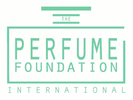
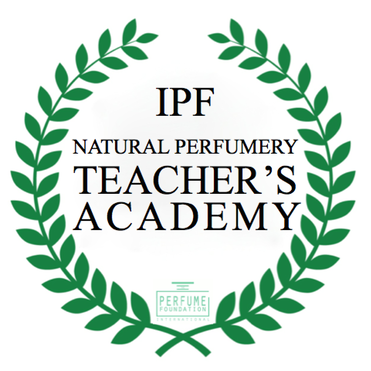








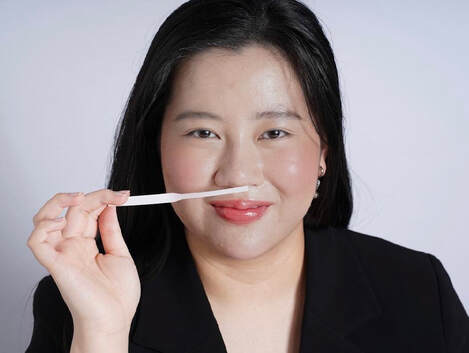

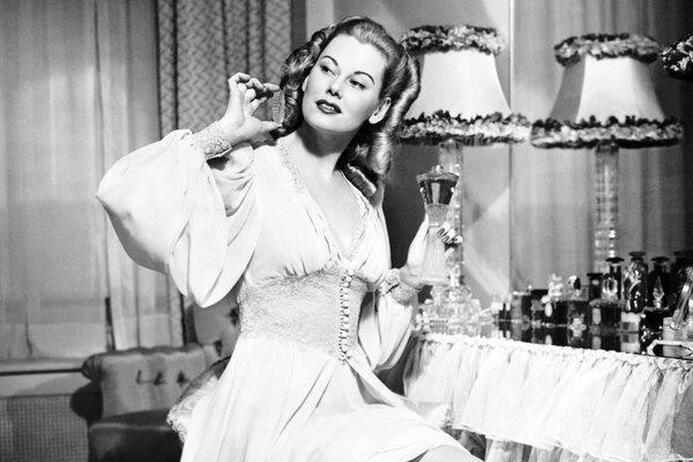
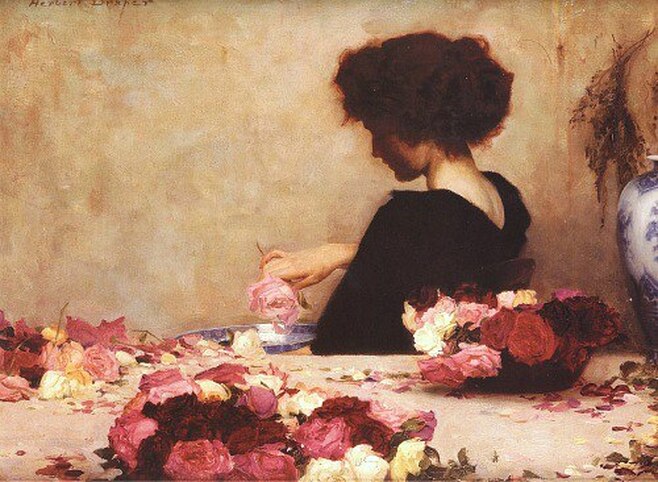
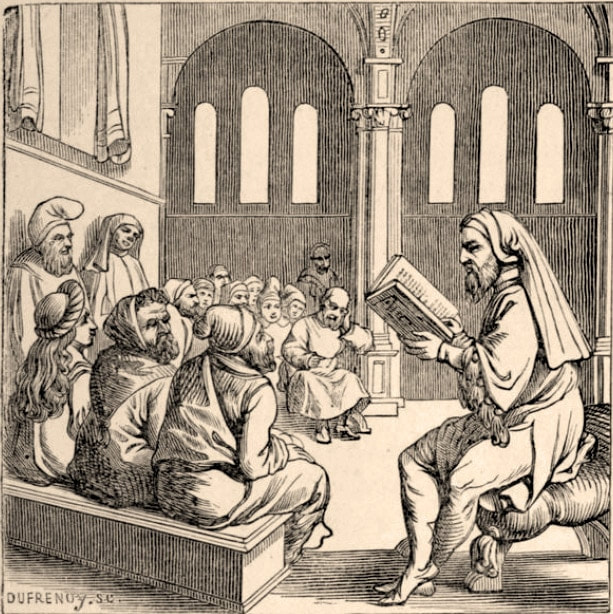
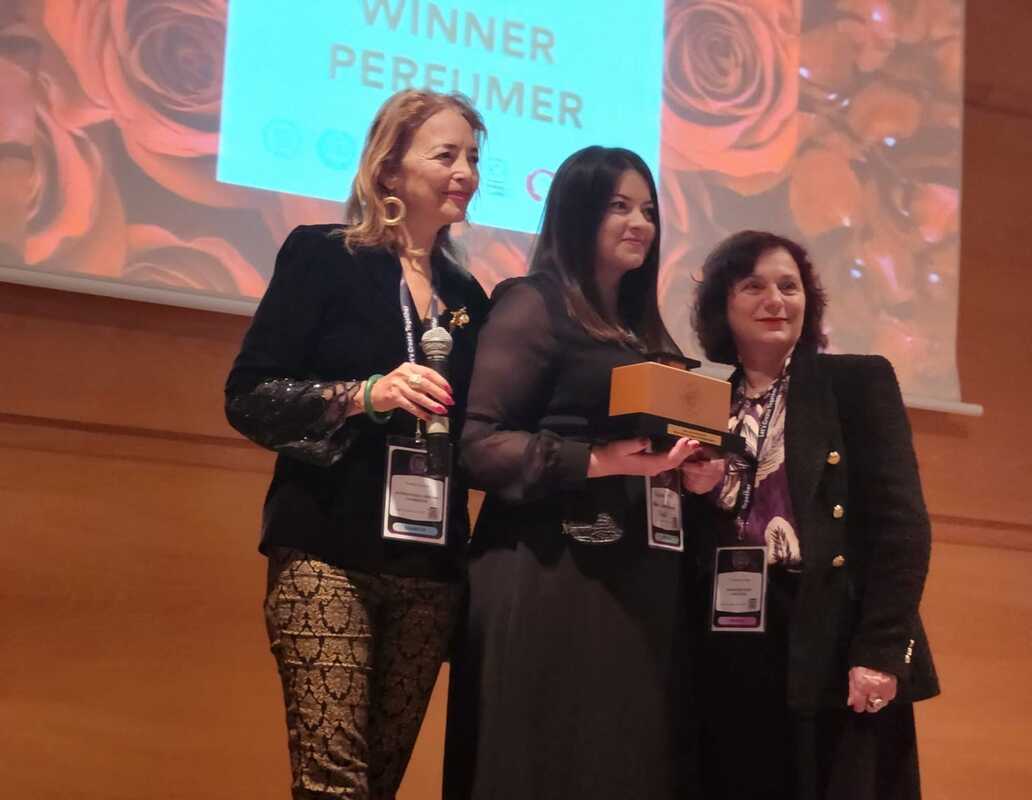
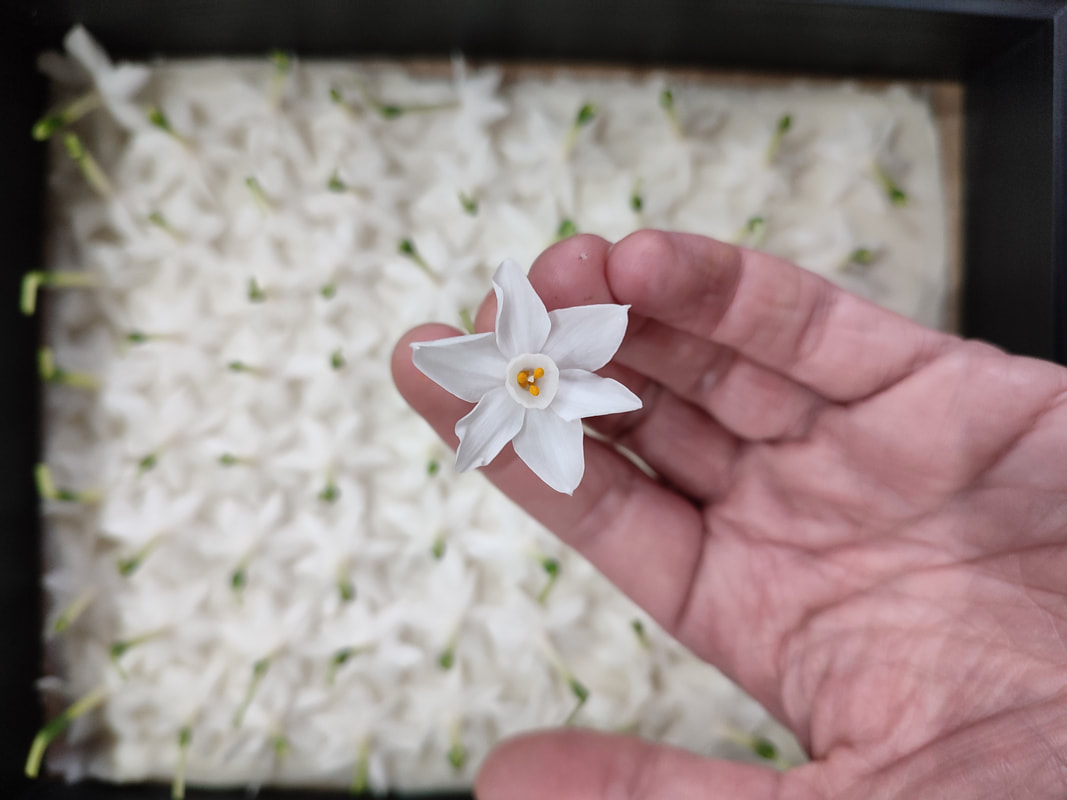

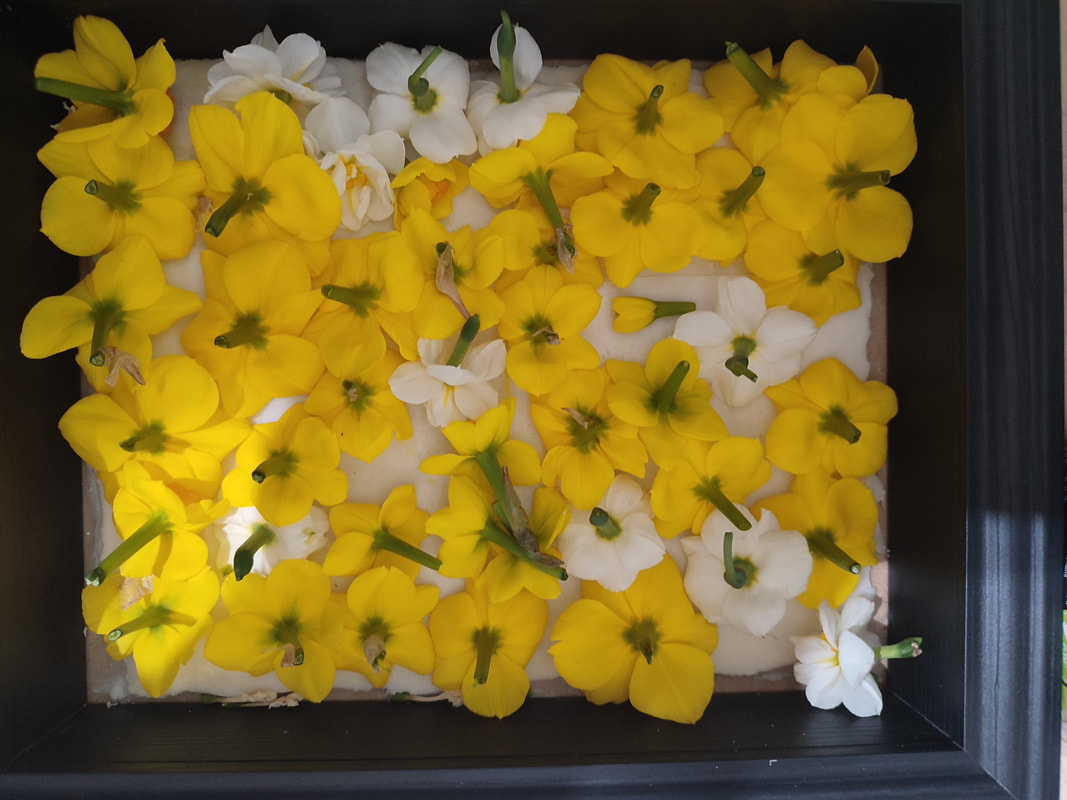

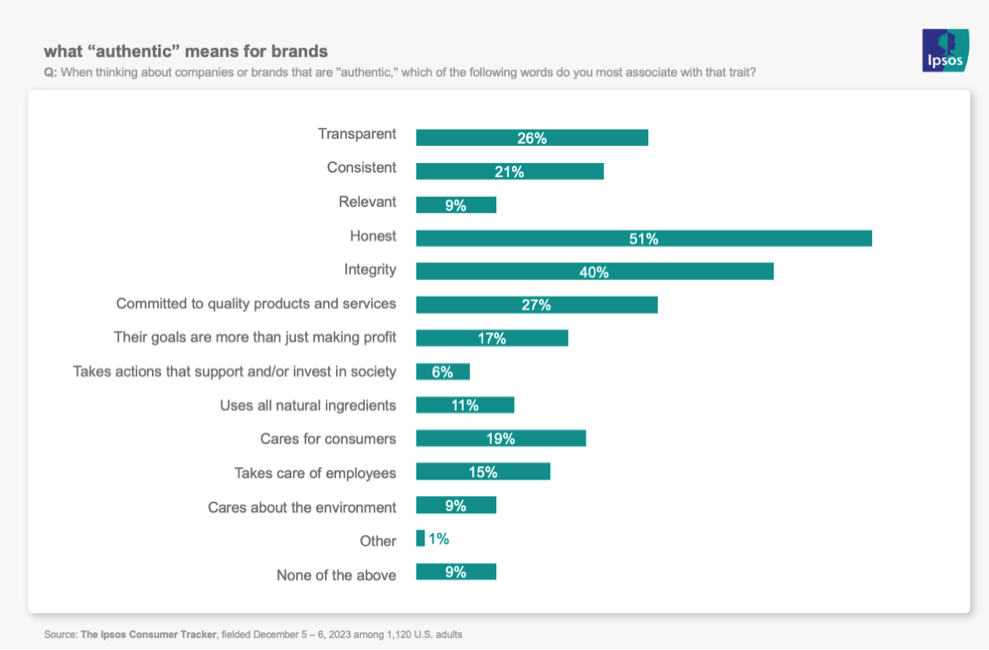
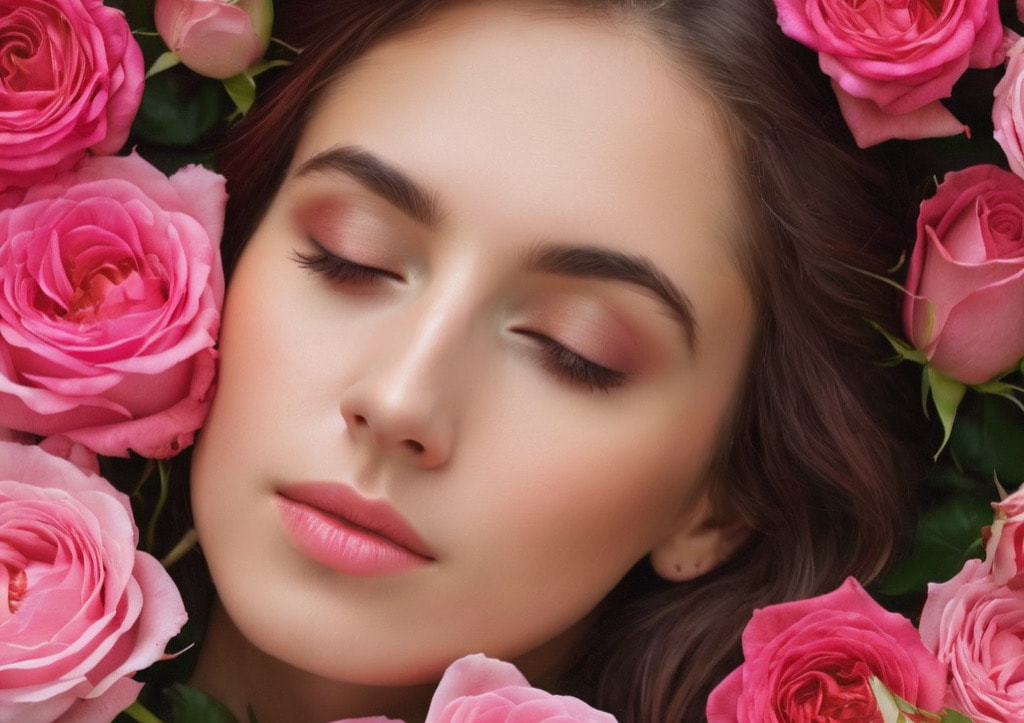
 RSS Feed
RSS Feed
